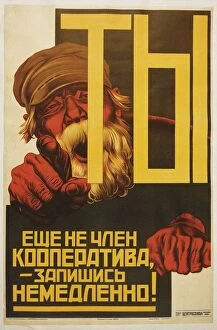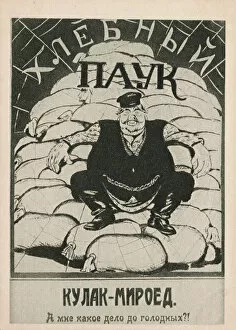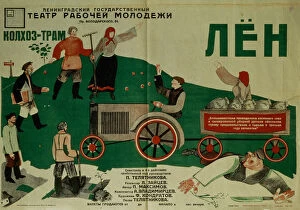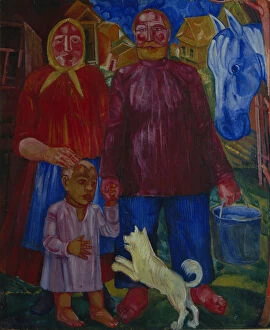Individual Peasant Collection
In the early 1920s, as the winds of change swept across Russia, tensions between landowners and peasants reached a boiling point
All Professionally Made to Order for Quick Shipping
In the early 1920s, as the winds of change swept across Russia, tensions between landowners and peasants reached a boiling point. The sharpening of knives and teeth became symbolic of their growing animosity. The kulaks, notorious for their exploitative practices, were seen as bloodsuckers by the struggling masses. Deni's powerful illustrations captured this sentiment perfectly. In one image from 1921, a kulak sneers at the hungry population, displaying his utter disregard for their suffering. It was clear that these parasites had no intention of sharing their wealth or easing the plight of those beneath them. As time went on, calls to eradicate these "damned parasites" grew louder. The Lapot Satirical Journal boldly proclaimed its disdain for such individuals in its cover art from 1924. This sentiment was echoed in posters urging immediate membership in cooperatives to break free from the clutches of oppressive landowners. By the early 1930s, collectivization had become a central goal under Stalin's five-year plan. Gustav Klutsis' poster emphasized this objective - an end to individual peasant farming and a transition towards collective agriculture. However, amidst all this upheaval and struggle against exploitation, there were glimpses into everyday life for ordinary peasants like "The Family of Serednyaks. " Viktor Palmov's poignant artwork depicted a humble family trying to make ends meet during turbulent times. Through it all, Deni's portrayal of kulaks alongside priests further highlighted how power structures intertwined with religion to maintain control over the peasantry. These collaborations only fueled resentment among those yearning for equality and justice. In retrospect, these historical artifacts serve as reminders not just of past struggles but also as cautionary tales about inequality and oppression that still persist today. They remind us that even seemingly small actions can have profound consequences on society at large – whether it be sharpening knives or signing up for a cooperative.










